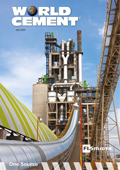Editorial comment
Permaculture is a term most often associated with the production of food. If you haven’t heard of it, it’s a system whereby landscapes – most often agricultural albeit, for the most part, on a small scale – are designed with the maximum emphasis on functionality, productivity and sustainability with minimum waste, minimum human effort and minimum energy input. A layered system that incorporates perennials, shrubs, vines and trees makes the maximum use of limited space in a design system also known as forest gardening. In fact, the principles of permaculture are by no means limited to food production and could equally be applied to urban planning, with principles such as: catch and store energy; produce no waste; integrate rather than segregate; creatively use and respond to change.*
Register for free »
Get started now for absolutely FREE, no credit card required.
In January, design firm Arup put forward an idea of what the future built environment might look like. It is based on similar principles, integrating renewable energy solutions such as photovoltaic painted panels and an algae façade that produces biofuel; water collection and recycling that then also supplies the food production modules; heat recovery windows and a building membrane that converts carbon dioxide into oxygen; integrated community spaces, education and office facilities, and a variety of transport options that connect with other buildings; as well as a built-in recycling centre and connections for additional power and water supplies. All this in a completely modular, completely flexible, layered high-rise building.** It’s forest gardening, for buildings.
Arup suggest that such a building could be possible by 2050, at which point, as they point out, 75% of the global population of 9 billion people will be living in cities. Scarcity of resources will make such a sustainable building design even more important. I strongly believe that the cement industry needs to be actively engaged in these kinds of discussions in order to guarantee a foot in the door when the urban planners of the future go out to tender. Even if the cement mix isn’t exactly the same as it is today, there’s no reason why we shouldn’t be at the forefront of whatever the next generation of building product looks like. Working together with other construction industry suppliers to offer the best possible solutions for sustainable buildings will likewise be crucial.
You’ll notice in this issue news of ThyssenKrupp’s new entity, ThyssenKrupp Resource Technologies, which combines ThyssenKrupp Polysius and ThyssenKrupp Fördertechnik into a single supplier for the mining, minerals, cement and bulk handling industries. Other suppliers have taken a similar approach as they endeavour to win a greater market share by providing their customers with a broader service offering. I am not suggesting the cement industry should be integrated with the construction industry, but surely there is something to be said for working more closely with the ultimate end user, particularly for those companies that have already vertically integrated into concrete.
No doubt this and related topics will be up for discussion all over the world this month, as the cement industry and its suppliers gather at bauma, Powtech, Cementtech and the IEEE-IAS/PCA Conference. We’ll be at all four events, as will the magazine. Please do look out for us – we’re looking forward to meeting you there!
*http://www.permaculture.org.uk/knowledge-base/principles.
** See what this would look like at http://www.arup.com


